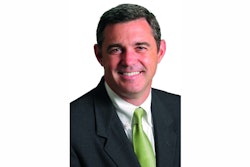Oct. 04--On Thursday afternoon, Tim Hoag stood in the arrivals area at Minneapolis-St. Paul International Airport looking for a truck driver.
The man he was waiting for, Bill McMahon, had previously driven trucks for Hoag's company, Copeland Trucking of Fridley, and Hoag made a deal to lure him back.
Because McMahon now lives in California, Hoag agreed to let him drive out there once a month, even though Copeland avoids jobs in California because of the state's burdensome regulations. But finding drivers is so difficult these days that Hoag was willing accommodate McMahon's desire for regular visits home.
"It will be worth it just to have him available here in the Midwest for those three weeks of every month," Hoag said. "That is what you have to do in today's environment."
McMahon is thrilled. "I think it's awesome. They are going to take care of me and I am going to take care of them," he said Thursday. "That's what we agreed on. That's why I'm here."
Across the country, trucking companies, and manufacturers and retailers with their own fleets, are resorting to an array of incentives, including higher wages, to attract drivers.
Wal-Mart Stores Inc., the nation's biggest retailer and operator of one of its biggest truck fleets, is using radio ads to appeal to qualified truck drivers with an offer of a $76,000 salary plus benefits to join the company. That's far above the national average trucker pay of around $50,000 and Minnesota's average of $46,000.
Wal-Mart has 7,200 truck drivers but needs more, spokesman Brian Nick said.
"There is definitely a shortage in the company ... and an overall shortage in the industry," Nick said. "We are anxious to get more folks applications so we can pursue more hiring."
The American Trucking Associations reports that the country has 750,000 "for hire" drivers but needs at least 30,000 more at the moment. It estimates the industry must hire 100,000 drivers every year for 10 years if it hopes to keep up with retirements, turnover and industry growth.
Hoag estimates he turns down about 10 hauling requests from potential customers every day. He's looking to add eight drivers to the 56 who currently work for the firm.
"We could grow as big as we wanted if we could find drivers," said Hoag, who owns Copeland with his longtime friend Richard Copeland. "We probably passed up $500,000 to $1 million of work this year because we don't have enough drivers. But everybody's in the same boat."
The reasons for the shortage are plentiful. The job has limited appeal to start with, because it takes drivers away from their families for extended times. Meanwhile, cost cuts by companies during the recession in 2008 and 2009 compressed drivers' wages. In 2013, truckers were paid 6 percent less, adjusted for inflation, than they were in 2003.
Railroad capacity has been consumed in much of the country by the movement of oil, gas and coal, putting pressure on trucks to move more freight. And new federal regulations have limited the time drivers can spend on the road.
"With the new federal regulations, it is harder to find a qualified driver today than ever before," said Kyle Kottke, general manager of Kottke Trucking in Buffalo Lake.
Today, U.S. truckers can only drive 70 hours a week or 11 hours a day. They can only work 14 hours a day, including the hours frequently spent waiting for short staffed warehouses to load or unload their rig. Drivers must regularly pull their rigs into checkpoints where officers check their time on the road. Violators are now reported on national databases. "It gives the industry a great transparency and allows us to I.D. who we don't want on the road," said Kottke. "But it also takes some of these people and puts them permanently on the sidelines."
Demand for truckers is so great that trucking companies -- and the shippers that use them -- are seeing their growth constrained.
St. Paul-based Ecolab Inc., which makes sanitizing chemicals for hotels, restaurants, schools and hospitals, needs drivers now. "With our supply chain, we do have approximately 100 open truck-driver positions," said Ecolab spokesman Roman Blahoski. "It would be safe to say that is a larger number than we typically have. It's a competitive market right now."
Kottke's firm, which trucks frozen food across the country for General Mills, Hormel, Jennie-O and Michael Foods, has 90 trucks and only 86 drivers. "I've been short since May," he said.
He pays drivers more than $50,000 a year. "But I will tell you, that is not enough. It's not enough pay to offset the sacrifice to your lifestyle," he said. "So, there is no question that driver pay is going up and will continue to go up. Driver pay is not adequate to attract new talent to our industry as we stand today. However, many of us are running as fast as is physically possible to adjust."
John Hausladen, president of the Minnesota Trucking Association, said its 700 member companies are scrambling to find the right wage and incentives to attract drivers. Trucking companies are also changing their freight hauling patterns to keep drivers closer to home, he said. And firms trucking goods between two cities are increasingly willing to use two drivers who meet midway and switch trailers at a designated yard. "We do see more of this relay trucking," Hausladen said. "We see trucking companies adding more trailer yards so drivers have an intermediate point that they can pick up a different load and head back home."
Hoag in Fridley said he recently heard about a firm in West Texas that was having trouble attracting drivers despite offering $83,000 a year. "You do whatever you have to do to keep the drivers happy and productive," he said. "You treat them like family. That's been our secret weapon."
Copeland Trucking drivers typically haul products around the heartland, like floor sweepers for Tennant, safety gear for CenturyLink and paint to Home Depot.
With McMahon, the former employee who wanted to get to California once a month, Hoag said he was even willing to buy plane tickets for trips home in order to bring McMahon back to Copeland. That way McMahon, a widower, could spend days with his sons, stepchildren and grandkids.
"I could have went to work in California," McMahon said. "I did get job offers, but they take better care of me here."
Hoag then showed him a new, white Kenworth tractor, which cost $145,000, still had sale stickers in the window, a mattress wrapped in plastic and 38 miles on the odometer.
Sixteen hours after landing in Minnesota, McMahon was at the wheel, heading south in his new truck, hauling pet food to Des Moines.
Dee DePass -- 612-673-7725
Copyright 2014 - Star Tribune (Minneapolis)








